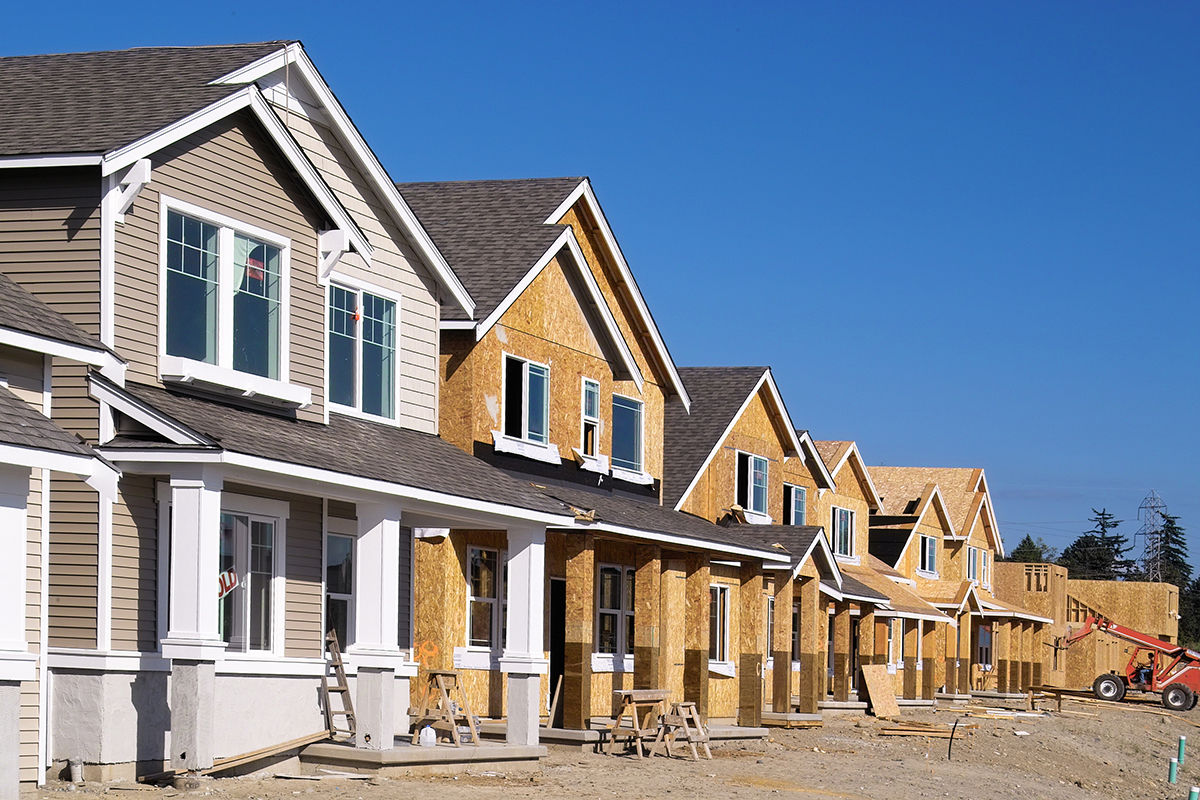The previous two blogs in this series summarized the Navigating Income Shifts in Montgomery County: Towards Shared Prosperity research brief that describes how disproportionate changes along the income distribution underlie Montgomery County’s stagnating incomes. The low-income population has been increasing rapidly, while the middle-income segment is shrinking, and the high-income population, though growing in absolute terms, has not increased as a share of the population.
This final blog in the series discusses why this trend is a problem and what Montgomery County can do about it. As a reminder, the expansion of the low-income population, by itself, is not a problem. Rather, it should be seen as a success and a validation of Montgomery County’s welcoming and diverse values, especially since Montgomery County has also been identified as one of the nation’s top springboards for economic mobility. The main goal of economic development is to help people become more prosperous.

The Real Problem: Zero-Sum Growth
The real problem is that Montgomery County lacks the room for enough growth at the middle and high ends of the income distribution. This pattern suggests that Montgomery County is no longer a place where people can climb the income ladder—or at least not a place where they can remain as they reach higher rungs. There is no fixed number of low-income people Montgomery County can welcome as long as more middle- and high-income people—from within and outside the county—balance out this growth. Montgomery County needs space for everyone to eliminate zero-sum growth dynamics.
Many essential jobs like teachers, police officers, and firefighters earn middle-income wages, especially at the early stages of their careers. If current patterns continue, these workers face unreasonably long commutes and may choose to work in other places altogether.
The current trend presents several challenges for the county. First, as Montgomery County relies significantly on income taxes to fund public services, a disproportionately low-income population could lead to reduced revenues and quality of services. Second, an unbalanced labor force limits business growth. Some of the county’s most competitive industries, like life sciences, rely on a large pool of middle- and high-income workers. Without this labor force, these businesses may leave the county or decline to locate here in the first place. The Montgomery County Life Sciences Real Estate and Land Use Compatibility Study notes this challenge, and Montgomery Planning’s Great Seneca Plan develops strategies to encourage more housing in the county’s leading life sciences corridor. This unbalanced income growth also threatens the public-sector labor force. Many essential jobs like teachers, police officers, and firefighters earn middle-income wages, especially at the early stages of their careers. If current patterns continue, these workers face unreasonably long commutes and may choose to work in other places altogether.
There is no single cause of the income shift underway in Montgomery County. However, these population trends in the context of the well-documented housing shortage suggest that many people can’t find appropriate housing that would allow them to stay or move to the county.
Taking Action with Market-Rate Infill Housing
This is why the main, actionable takeaway from this research is to encourage the production of market-rate infill housing. In doing so, Montgomery County can become an innovator and a leader in solving a problem that many places have been slow to confront. If the county continues to provide enough housing to grow at all income levels, it can move past the zero-sum housing competition that currently exists. A growing housing “pie” reduces the competition for the last slice. Welcoming low-income residents becomes unsustainable only when the rate of increase of this population far outpaces those elsewhere along the income distribution—that is, when middle- and high-income population increases don’t keep pace. Montgomery County—along with others like it—needs to expand its middle-income group urgently, and the best way to do this is by adding housing that is attainable to this population. The Housing for All chapter of Thrive Montgomery 2050 notes several strategies for encouraging this type of housing.

…And Continuing to Build Affordable Housing
Creating more market-rate infill housing is also compatible with a continued focus on affordable housing development. Montgomery County has been recognized as among the most aggressive and successful builders of public affordable housing not only in the region, but in the nation, and there is no reason to pause this approach. However, the county could be more strategic about where to locate affordable housing. Montgomery Planning’s Community Equity Index (CEI) suggests that incentivizing additional affordable housing beyond what is already required may not be appropriate for socio-economically disadvantaged neighborhoods because more affordable housing will concentrate more disadvantage there. Rather, to improve geographical equity in the county, affordable housing should be incentivized most strongly in the advantaged neighborhoods where few low-income people currently live.
A “More of Everything” Approach to Housing
Wherever affordable housing goes, the county needs sufficient market-rate housing countywide to accompany it, or there will be nowhere for affordable-housing residents to go once they are ready to upgrade. As the previous blog in this series shows, Prince William County, VA; Loudoun County, VA; Frederick County, MD; and Charles County, MD have together gained over 72,000 middle-income residents since 2005 (see Table 1 in that blog), accounting for 75% of the region’s net gains in middle-income residents. This suggests that the geographic fringes of the region are where middle-income housing is attainable.
Montgomery County can no longer compete with its rapidly growing neighbors or places in the Southern and Western United States like Texas, Arizona, Florida, and North Carolina, as these “sunbelt” regions continue the traditional practice of building single-family tract housing on inexpensive land. These places will reach their geographical, ecological, and fiscal limits eventually, just as Montgomery County did decades ago.
In places like Montgomery County, innovating with novel and diverse housing typologies can help use existing land efficiently and provide housing options that compete in price and size with single-family homes elsewhere. The Attainable Housing Strategies Initiative includes reforms to encourage these housing types, like allowing more units in single-family zones. These market-rate homes will not be affordable to everyone, but they will be affordable to many more people than the county’s current aging housing stock can accommodate.
Montgomery County’s population doesn’t have to—and in fact shouldn’t—remain static. But disproportionate growth at one end of the income distribution limits people’s ability to grow and thrive. Montgomery County has been a leader in providing affordable housing for decades, and it can continue to be. But by not keeping up in market-rate construction, it has created a zero-sum game for housing that the middle-class is losing. As Thrive Montgomery 2050 recommends, a “more of everything” approach can help to expand opportunities for everyone in Montgomery County.

About the author
Benjamin Kraft is a research planner in Montgomery Planning’s Research and Strategic Projects Division. His research and planning work focus on topics related to the economy and employment. Ben has a Ph.D. in city and regional planning from Georgia Tech and a master’s degree in urban planning from the University of Michigan.
Tony Byrne
Thanks for this piece, which is a nice capstone on the data you presented previously. I do wonder, though, if the Attainable Housing initiative really goes far enough to close the gap in middle-income housing that you cite above. Unless I missed them somehow, it would be great to see some projections.
CJ Kin
It is hard for me to understand the approach to housing when consideration for the county’s economy is not included. Our county has not grown; it does not attract new business; unless you work for the county government, too many people find employment outside of the county. It is shown time and time again, that when you have aggressive taxes/fees, it is the middle class that leaves because they truly cannot afford it. Without an overhaul of our “business” strategy, we are talking about building housing so we can be a bigger bedroom community to Fairfax, Arlington, etc. in Virginia. Why not let them building the housing for the people that will be working in their communities?
Mel Tull
When the intro is : “As a reminder, the expansion of the low-income population, by itself, is not a problem. ” a researcher might want to revisit the premise. The data had revealed that encouragement of low-income housing had begun to squeeze other income groups into housing choices outside the county. It is worth remembering that housing location becomes a choice at the middle-income level. While we ask why more and more workers independently choose for themselves to live in another jurisdiction, I would also ask whether it is true that further expansion of low-income population in Montgomery County will continue to not be a problem at 40%? at 50%? even 75%? What will the county become at those levels? We should all appreciate the stimulation of thought about the future how the future we imagine will affect the future we create.